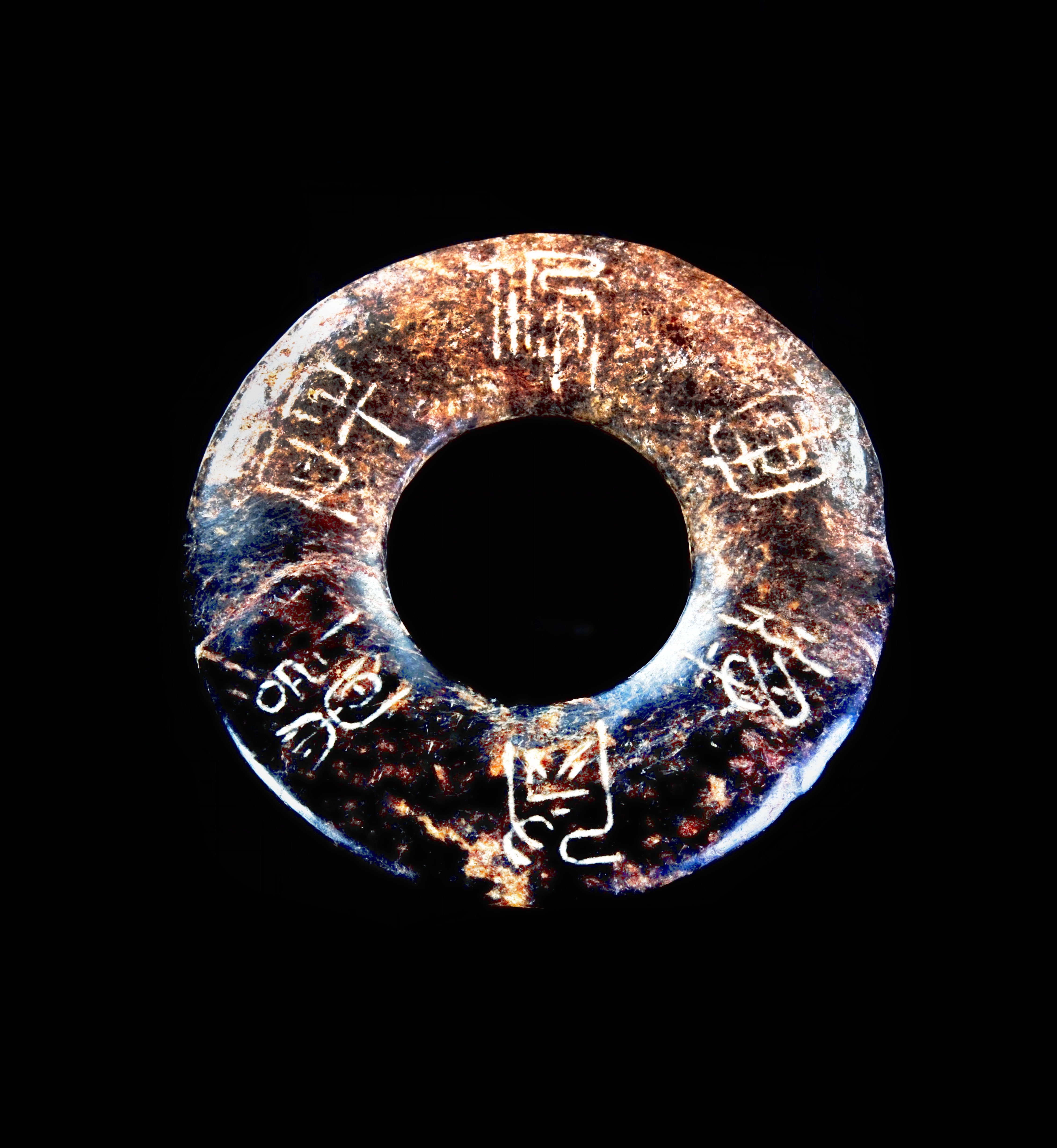
In this week’s blog, I will be taking a closer look at Pi stones and how shamans use them in their ceremonies and healing work.
What is a Pi Stone?
A Pi stone is a small circular stone with a hole in the middle, also known as a torus (the three-dimensional shape of a doughnut). They come in lots of different materials – the one depicted in the photograph (above) is an antique, Chinese jade Pi stone.
Is the shape significant?
Yes! Pi stones are a physical representation of the Wirracocha (see my blog, Wirracocha For Newbies), as well as being symbolic of our Luminous Energy Bodies and the energetic universe. Their circular shape also represents the archetype for ‘wholeness’.
The Pi stone’s special shape allows energy to flow up through the centre and then wrap back down around the shape, flowing down the outside and up through the centre again in a constant three-dimensional circling. It is said that energy circulates in and around us in a similar pattern, rising in our core, through our crown and down around our Luminous Energy Field, which surrounds our body. This cycle repeats continuously.
It is a bit like an Ouroboros too, isn’t it?
Yes, that’s right. The Pi stone can also be seen as representing the ouroboros, the serpent of light which swallows its own tail, constantly creating itself in the form of a circle. The Ouroboros (see image, below) symbolizes the eternal unity of all things, the cycle of life, death and rebirth. In this context, the centre of the Pi stone represents our energetic spine and the energy, which flows through the centre of our bodies. There is yet a further connection to be made with our own spiralling DNA, the building blocks of life.

What were Pi stones traditionally used for?
They have always afforded their owners protection, in the way that drawing the Wirracocha down around ourselves offers us a measure of spiritual security.
Traditionally, people would use Pi stones to ward off evil spirits or to protect their home, their family members or even their livestock. Both the Incas and the Mayans are known to have employed them.
How are Pi stones utilised by shamans today?
They are used primarily in the gifting of the Munay-Ki rites (see my previous blog posts and my book, Journeying Through The Munay-Ki), serving as a reminder of the Wirracocha, under which all the rites proceed.
The tradition is for your teacher to gift you a Pi stone as part of your Munay-Ki course. Some practitioners choose to do this at the conclusion of the final rite but I like to present one at the start of my students’ course so that they can work with their own stone, as they are gifted and as they practice the Munay-Ki Rites. At the end of the course, they are left with a physical reminder of the rites and a sacred object, which they can use to gift the rites to others.
How do I activate my Pi stone?
If it has not been gifted on a Munay-Ki course, you can activate it by anointing it with oil, passing it through incense, leaving it in the light of a Full Moon, or by journeying with it in your hand and lifting it into the light of the Upper World.
Are Pi stones expensive to buy?
Not at all – they certainly do not have to be made from precious stones! In fact, you can find some very beautiful Pi stones for as little as £3. Common choices of material for Pi stones are quartz, sodalite, jasper and agate.
See which material calls to you, or have a look at the properties of each stone – do you want to utilise the healing properties of quartz, the self-confidence boost of sodalite, the creativity of jasper, or the stability of agate?

